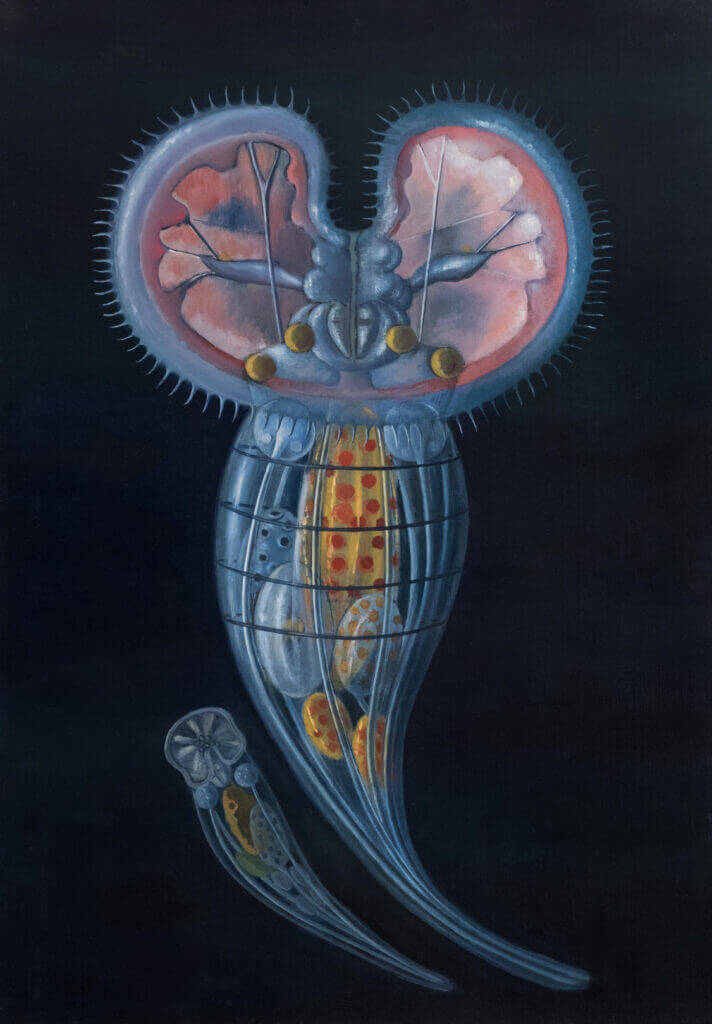Your currently viewing RAW Modern | Switch to RAW Contemporary
Les Belles Vacances, 1964
The title of Les Belles Vacances is inspired by the Surrealist novel, ‘Les vacances d’un enfant’, 1947, by Louis Scutenaire (1905-1987), which recounts the vacation of a young boy and his hallucinatory walks in nature where he has strange daydreams about the sun, monsters and insects.
As a child, Graverol loved wandering through the Royal Belgian Institute for Natural Sciences, and during the 1950s and 60s, she became fascinated by zooplankton. Having long celebrated the androgyny and hermaphroditism of fantastical creatures in her paintings, such as ‘The School of Vanity’ (1967), Graverol was particularly inspired by the unicellular and non-motile aspect of these aquatic creatures. Les Belles Vacances depicts two bdelloid rotifers, the larger with its mouth open, the smaller with its mouth closed. These microscopic aquatic animals reproduce exclusively by parthenogenesis, a form of asexual reproduction where embryos grow and develop without the need for fertilization.
In ‘Temps mêlés’, (1953), René Magritte wrote, ‘everything that Madame Jane Graverol wants to paint seems to me to be charged with the symbolic resonance that comes from a variety of romantic and dramatic feelings’. Typical of Graverol‘s work in particular, and Surrealism in general, Les Belles Vacances is highly charged with symbolism. The form portrayed recalls female reproductive organs – complete with fallopian tubes and ovaries – while the smaller oval–headed, long-tailed floating form evokes a spermatozoon. In both forms, colourful eggs are bursting to be released from the fluorescent sacks – complete with girdle-like structures – that contain them. The juxtaposition of translucent forms against a blue-black background, recalling squid ink, imbues the picture with a strong sense of iridescence and luminosity.

